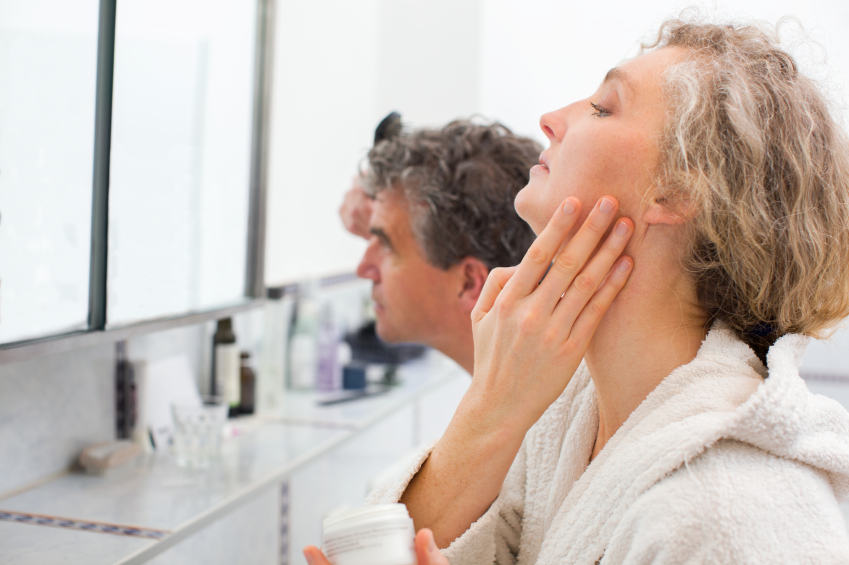AARP Hearing Center
Exercise, Not Lotions, May Reverse Aging in Skin
By Candy Sagon, April 29, 2014 09:00 AM

Want skin that looks 20 to 30 years younger? Forget the lotions and potions; instead, try exercising twice a week.
Surprising new Canadian research on sedentary adults age 65-plus found that exercise significantly improved their skin composition. Skin samples viewed under a microscope before and after three months of exercise showed that exercise had reversed the aging effects: The skin layers were similar to those of people decades younger.
"I don't want to overhype the results, but, really, it was pretty remarkable to see," Mark Tarnopolsky, M.D., professor of pediatrics and exercise science at McMaster University in Hamilton, Ontario, told the New York Times. He presented his results this month at the American Medical Society for Sports Medicine annual meeting in New Orleans.
>> Sign up for the AARP Health Newsletter
Tarnopolsky had previously done a similar study on mice, published in 2011 in the Proceedings of the National Academy of Sciences. "We ran mice three times a week for 45 minutes" and saw "dramatic benefits" in the animals' skin and organs. "Even the gonads of our mice were better with exercise!" he noted to AARP in an email.
The question was whether exercise could do the same in humans - slow down or even reverse the effects of aging in our skin. As we get older, the outer layer of our skin thickens, becoming dry, flaky and dense, Tarnopolsky explained, while the collagen in the supportive inner layer thins, causing our skin to sag and wrinkle.
To see if exercise could offset these effects, Tarnopolsky and his team first biopsied skin samples (taken from un-sun-damaged skin on the upper buttocks) from both sedentary and athletic older adults. Under the microscope, the athletes' skin appeared much younger, with a thinner outer layer and more collagen in the inner layer, than that of the non-active adults.
To make sure this wasn't due to "differences in nutrition, genetic factors or some other factor," the researchers then got a group of sedentary volunteers, 65 or older with typical skin for their age, to undertake a twice-a-week exercise regimen. The volunteers either jogged or cycled at a moderately strenuous pace for 30 minutes, eventually progressing to 45 minutes, Tarnopolsky said.
>> Get discounts on health services with your AARP Member Advantages.
After three months, their skin was checked again, and the change was dramatic: "The aging changes had returned to that of someone 30 years younger," simply because of exercise, Tarnopolsky said.
While questions still remain (personally, I'd like to know if these changes also occur in the facial cheek, not just the tush cheek), Tarnopolsky says the good news is that at least when it comes to our skin, "it is never too late to start exercising."
Photo: Thomas EyeDesign/iStock
Also of Interest
- The Scoop on Skin From Oprah and Ellen's Dermatologist
- 9 Nasty Things to Throw Away Today
- Fight fraud and ID theft with the AARP Fraud Watch Network.
- Join AARP: Savings, resources and news for your well-being
See the AARP home page for deals, savings tips, trivia and more































































